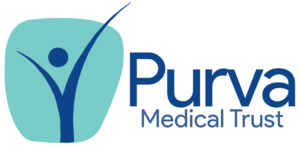Small Bodies, Big Challenges
Stroke has no age limits. It can happen to teenagers, children, even infants.
All About Pediatric Brain-stroke
Like in adults, pediatric brain stroke is of two types: hemorrhagic, where there is excessive bleeding in the brain tissues and ischemic, where the blood supply gets interrupted. Although strokes are rare in babies, children, and adolescents, they can and do occur. When pediatric stroke strikes, it poses significant risks to a child’s development and well-being. However, with timely and appropriate treatment, the chances of a positive outcome are greatly increased, underscoring the importance of early recognition and swift medical intervention to support your child’s health and recovery.

What are the warning signs for pediatric stroke?

Look for any signs of drooping or unevenness in the child's face. Ask the child to smile or show their teeth. If one side of the face appears uneven or drooping, it could be a sign of a stroke.

Check for weakness or numbness in one arm. Ask the child to raise both arms. If one arm drifts downward or the child cannot lift it fully, it may indicate a stroke.

Listen for slurred speech or difficulty speaking. Ask the child to repeat a simple sentence. If their speech is unclear or they have trouble speaking, this could be another sign.

If you notice any of these symptoms, it's important to act quickly and call emergency services immediately. Prompt medical attention is crucial for the best possible outcome.
“Babies don’t complain! Headaches, vomiting, excessive sleepiness, convulsions, refusal to eat, weakness and irritability could be the earliest symptoms of a brain haemorrhage.”

Risk Factors for Pediatric Brain-stroke
- Heart problems: Congenital heart disease is one of the most common risk factors for stroke in children.
- Blood vessel abnormalities: These include blood vessel malformations, dissection, and vasculitis.
- Blood clotting problems: include thrombophilia, haemophilia, and prothrombotic conditions.
- Other conditions: These include sickle cell disease, metabolic disorders, genetic conditions, and diabetes.
- Injuries: These include head injuries, neck injuries, and traumatic brain injuries (TBIs).
- Infections: include meningitis and encephalitis, and the timing and number of minor infections may be a risk factor.
- Other factors: These include high blood pressure, obesity, and cerebral hypoxia (lack of oxygen to the brain) during birth

